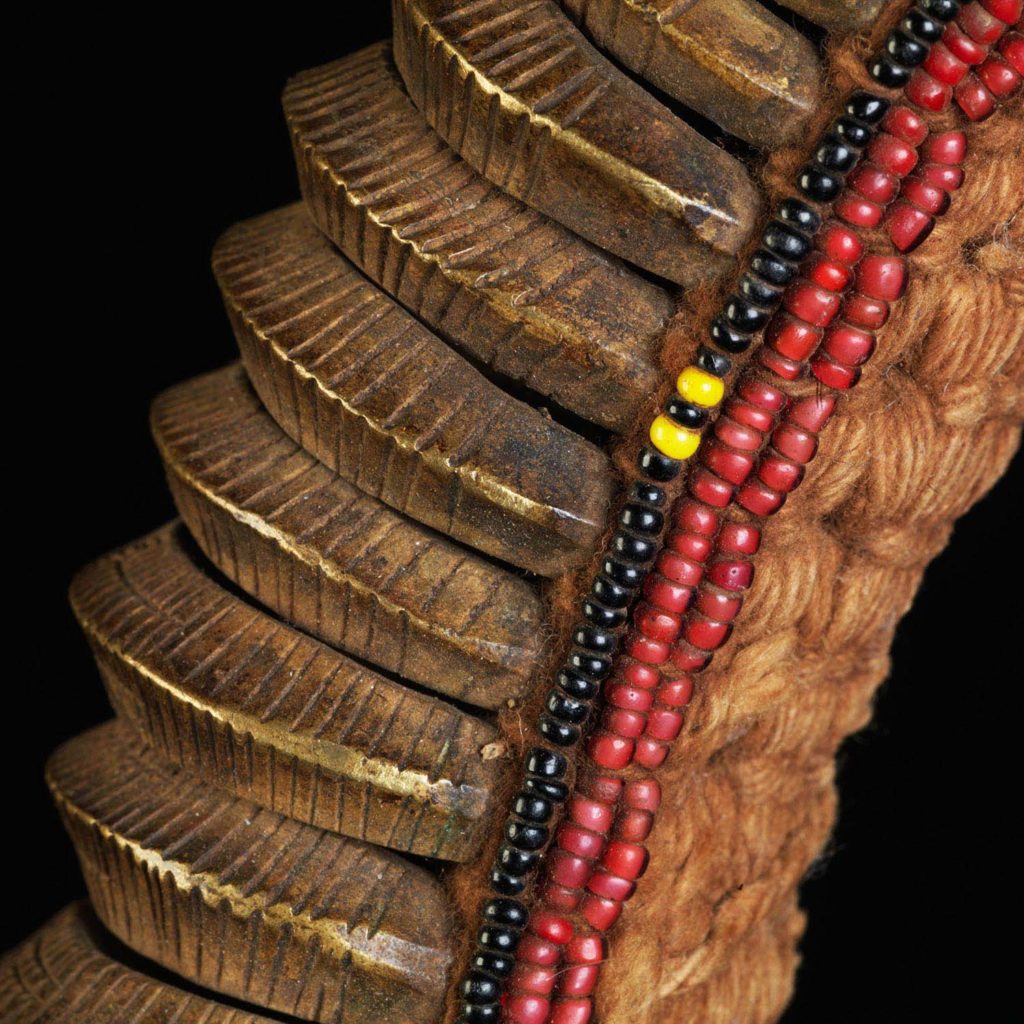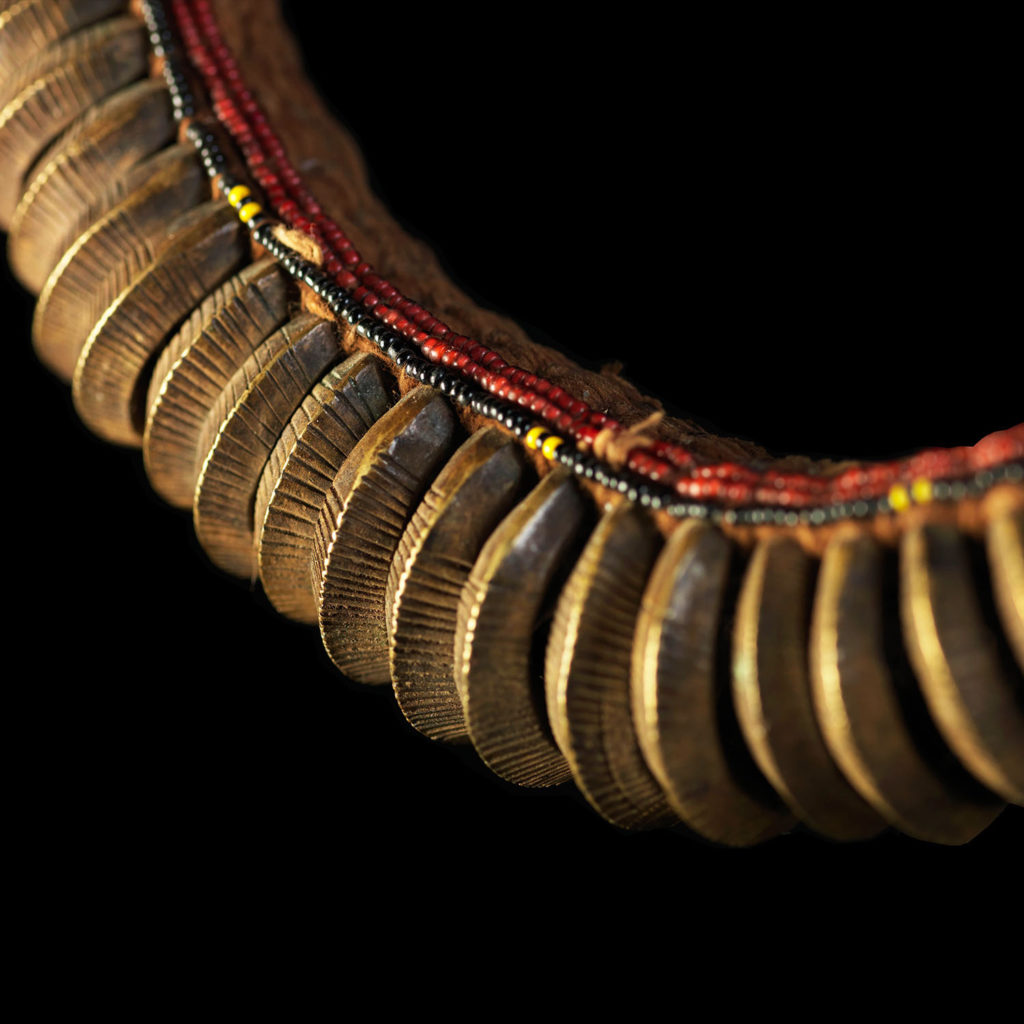Necklace
The necklace consists of 64 brass rings, each ring has a diagonal contour and chasing. The brass rings are wound on a thick wire, which is wrapped in a beige yarn. On the inside of the chain the yarn is woven in a weaving technique to prevent chafing at the neck. In addition there are three rows of beads all around, two rows of small red and one row of black beads, which are partially interrupted by yellow beads. The blue thick cord of yarn is a later addition.
This necklace represents a relatively rare type of male jewellery, known to the Maloh and Iran, but less common among the upstream Dayak (orang ulu). Very similar necklaces are also known among the Igorot groups on Luzon, the Luma groups on Mindanao, the Batak on Sumatra, the Miao and Yu in China and in East Indonesia. Similar forms of jewellery are also found in the Ban Chian culture and the Dian culture made from dogs in the Greater South China area and the southern bordering states. (4 Century b.o.c. to 2nd century b.o.c.) became known. This indicates that this is an old form of jewellery from the Middle Ages. The well-known jewellery forms of the Kayak and Ngadju-Dayak have a different character and refer to a different cultural level, which is more in line with the Zhou Chinese jewellery and decoration traditions. The Iban, who are very close to the Illanún and some Mindanao groups in terms of their art tradition, only immigrated to Borneo from Sumatra in the course of the early second century and influenced and superimposed the (there) older Dayak art style in the north.
| Object | Necklace |
| Culture | Borneo, Dayak |
| Time | 19th century |
| Dimensions: | Diameter 21,50 cm |
| Material | Twisted textile ribbon, brainded foundation, bronze rings, beads |






